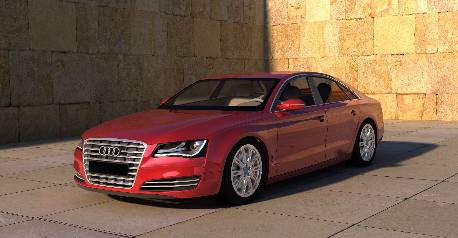Buying a used vehicle is often perceived as buying someone else’s problems. As a result, when it’s time to get a different car most people prefer a new one. Once the choice to get a new car is made there is still one more decision to make, buy or lease.
When you lease a car almost every time the lease is lower than the loan payments. When leasing a car you only pay for what the car goes down in value under the lease time. So in terms of saving money when leasing a car instead of buying a car with loan payments you save money.
Owning a Vehicle
With an outright buy, you own the vehicle. Once it’s paid for no one can tell you how to treat it, or how it can or should be used.
If you plan on keeping it for decades it doesn’t really matter what it looks like. Not washing or waxing it is irrelevant because you’re simply going to keep it until it stops running. The number of miles you put on the car is also strictly up to you.
Of course, if you care about the trade-in value, you’d be smart to take care of the car. Its value may remain high if it is well taken care of and has low mileage.
Leasing a Vehicle
Taking out a lease it’s a slightly different story. You never really own the vehicle. The very definition of the word says you are merely entitled to the use of it for a specified period of time–provided certain conditions are met.
With an auto lease, you’re obliged to take reasonable care for the duration of the lease. Turning the vehicle in with a lot of damage could very likely result in having to pay a penalty. You’re also limited on how many miles you can put on the car during the lease period. If you go over the allotted miles, you pay a penalty.
Trade-in value is not a consideration. You just turn the vehicle over to the leasing company. If there is no extraordinary damage and the miles are within the allowed maximum the deal is simply over with.
Financial Considerations
For some, the choice of buying or leasing comes down to one basic consideration: which is cheaper in the long run? There are a lot of factors involved and both methods have their merits.
Leasing
- If the percentage rate and down payment are the same, you’ll end up paying less per month with a lease.
- When the payment period is ended you simply walk away from a lease, in which case you owe nothing, but have no vehicle. If you like the leased vehicle, you’ll have the opportunity to purchase it. Otherwise, you’ll have to either lease or buy a different car.
- Leases carry conditions, such as a limit on the number of miles you’re allowed during the lease period. If you exceed the limit it will cost extra.
- As long as you take care of the leased vehicle it will retain its value and won’t cost you anything extra for damage at the end of the lease.
- By continually leasing you can always be driving a new vehicle.
Owning
- If you paid cash or have your vehicle paid off when you trade-in your car–in other words, if you own it outright–it will probably cost you less to buy than to lease.
- If you own your car, you can put as many miles on it as you choose, but remember, a high mileage vehicle is worth significantly less at trade-in time.
- Owning a vehicle means having a value in the car to use toward a down payment for another vehicle.
- You can trade in the car at any time. However, it may not be a financially sound decision unless the car is worth more than you owe on it.
- Buying a vehicle is less complicated than leasing. Simply put, as long as you make the payments on time the car is yours to do with as you will.
Can leasing a car save you money? As you can see, there are pros and cons to either choice. The bottom line is you’ll have to negotiate with the dealer, discuss all your options, and then decide whether buying or leasing is the best choice for you.
Like any other decision you make in your life, gathering as much information ahead of time is the intelligent thing to do.


